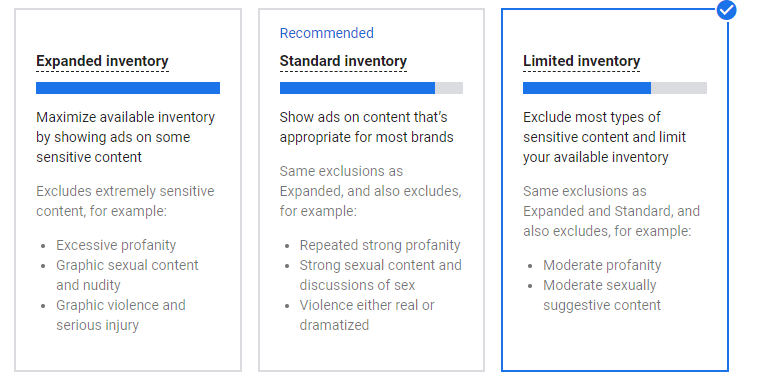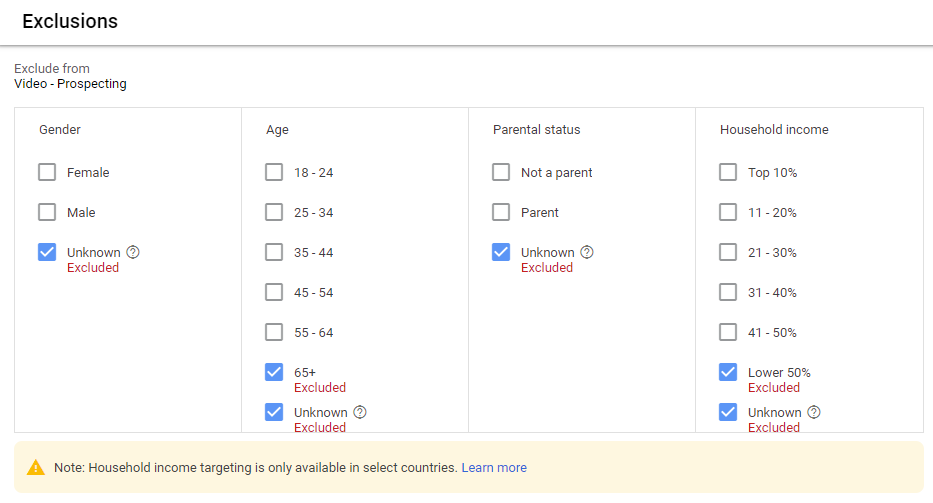YouTube is wildly popular and your customers are spending large amounts of their media consumption time watching videos there. There is a large opportunity to connect with your target audience while they are watching videos on YouTube. If you want to make sure your brand leverages this consumer attention opportunity without appearing to support objectionable content, there are some YouTube (aka Google Ads for Video) settings which need to be set up correctly.
This will be the first in a series of posts which will surface some often overlooked campaign settings which can help you reach your target audience on YouTube in a brand safe manner.
Targeting
Campaign Wide Targets
At the campaign level you can select one of three options for general inventory rules. Limited inventory is the most brand safe but also the most expensive on a cost per view or cost per thousand impressions basis. Standard inventory is significantly less restrictive, but still provides some guardrails against highly objectionable videos. The expanded inventory setting will allow your ads to show on any monetized content and will only be limited by your other category, keyword, placement, or other exclusions.
Broad Inventory Rules

Content Exclusions
These exclusions can protect your brand from appearing alongside specific types of content. I often exclude live streams and embedded videos for my clients. Embedded YouTube videos have the potential to appear on any website, even a site that is completely unrelated. This can significantly increase the risk of your video ad appearing against content you’d rather it hadn’t. Livestreams ad risk because it can’t be moderated or reviewed prior to your ad serving against it.
The other categories of content are similar to the movie ratings system we’re familiar with. The G, PG, T, and MA ratings closely match to G, PG, PG-13 and R ratings on movies. Content not yet labeled is a category I like to exclude because there’s no way to know what rating the content will eventually receive while it is in this status.
Audience Exclusions
Audience exclusions are based on IP, signed in, device ID and other user signals Google’s systems have collected. The exclusion categories which are available are pretty self explanatory and displayed below.

Using these filters you can expand or limit your reach based on your advertising goals and risk preferences. As a general rule, selecting fewer restrictions will allow you to reach more users or deliver more ad impressions while staying within a target budget. Since higher quality and lower risk content is generally bid on by more advertisers, it is more expensive to have heavy restrictions than wide targeting.
I hope this quick post has been informative. If you’re an advertiser who would like to have a YouTube/Google Ads for Video campaign professionally managed by our team, please schedule a call to explore a fit as a client.

Recent Comments